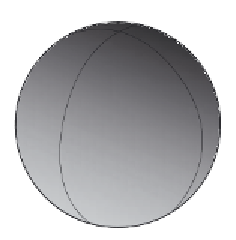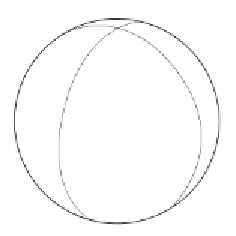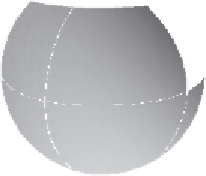Global Positioning System Reference
In-Depth Information
FIGURE 4.5.
Three families of map projection. (a) Azimuthal projection: the globe is
placed on a flat piece of paper. (b) Conical projection: a paper cone is placed on the
globe. In this case, the cone and the globe touch at a parallel that is north of the
equator (shown here as a curved white line). The base of the cone is open; a ruler
placed across its diameter would just touch the South Pole. (c) Cylindrical projection:
a flat piece of paper is wrapped around a globe. In this case, the paper and the globe
touch at the equator. Projections are illustrated by arrows for the conical and
azimuthal cases. In (b) I have chosen to project from the South Pole, whereas in
(a) the projection is from the center of the globe.
as shown in figure 4.5a. In this case, the globe is simply placed on the
flat sheet of paper and a projection is performed for the configuration
shown. For this reason, azimuthal projections are conceptually the sim-
plest. Therefore, we begin our detailed look at projections by considering
these projections onto a plane.












































